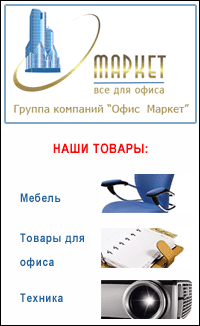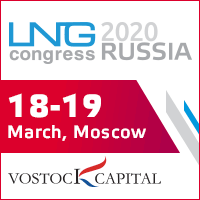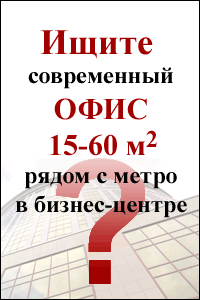Tatneft’s petrochemical subsidiary conquers the world with its quality products

Tatneft-Neftekhim Management Company was established in 2002 to develop petrochemical products and solve systemic tasks of modernizing and improving the efficiency of production processes in the region. Today, its assets include tire, machinery, raw material production, trade and intermediary companies: Nizhnekamskshina, Nizhnekamsk Tire Factory, Nizhnekamsk Technical Carbon Plant, Nizhnekamsk Mechanical Plant, Yarpolimermash-Tatneft, KAMA Scientific and Technology Center, Tatneft-Neftekhimsnab, KAMA Trading House and Nizhnekamsk Synthetic Oils Factory.
Today, there is a cutthroat competition among famous global tire brands on the Russian market. “We are doing everything not to lose this battle to our foreign competitors, Tatneft-Neftekhim Management Company CEO Zagit Sharafeyev said. “So far, the sum of investments funneled by Tatneft into the development of its tire business division and the industry in general totaled over 30bln rubles.” Specifically, the company has launched the production of highly effective radial car tires under the KAMA-Euro brand using modern foreign technologies. It has upgraded its assembling facilities, and thus increased its annual tire output to 2.9mln units. The Wire-Cord Tire Plant, with an output capacity of 1.2mln units per year, was set up with the help of technologies of German company Continental, which has also helped train the plant’s employees. This is a unique production facility in Russia and other CIS countries.
Sharafeyev also noted that the investment program, approved by Nizhnekamskshina shareholders in 2011, envisages further modernization of the company. For this purpose, the company has set aside the sum of 423.7mln rubles. Today, Nizhnekamsk Tire Factory’s products, in terms of quality, are not inferior to other famous global brands, and this is one of the main distinguishing features of the company’s modern production facilities. High levels of durability and reliability of these tires are achieved through the use of steel cords in the frame and optimal construction design of the tires’ breakers and boards. This helps increase their load-carrying capacity to 8%, while the capability to recover protector marks increases their life span up to 500,000 kilometers and fuel economy by 10%. Last September, Continental signed a contract for tire production at the plant on an ‘off-take’ system principle. The plant started producing tires under the Continental and Matador brands in January this year.
Talking about the geography of his company’s cooperation, Sharafeyev said the tire plant sells its products to the biggest automanufacturers in Russia and CIS, notably, AvtoVAZ, KAMAZ, Volkswagen Group Russia, Nefaz, Thonar Mechanical Factory and Asia-Auto in Kazakhstan as well as exports them to 37 countries across the globe. Tire products with the KAMA logo are now well known in several Eastern European countries, such as the Czech Republic, Slovakia and Bulgaria. Besides, KAMA is a regular participant in the REIFEN exhibition in Essen, Germany, one of the world's largest tire expos. “At the end of May this year, we had talks with a major French vehicle tires distributor that holds a leading position on the French tire sales market and is the official representative of Toyo, Marangoni, Michelin and other famous global tire brands,” Sharafeyev noted. “And, according to the French company’s owner and CEO, Nizhnekamsk’s tires are highly popular among Europeans from the point of view of their price-to-quality ratio.”
“This global recognition of the importance of chemicals for economy and humanity is particularly vital for Tatarstan, where petrochemical industry occupies a key position in the regional economy.”
The tire company, according to Sharafeyev, has started working with Uruguay in South America, while the acquisition of the Brazilian INMETRO Certificate has broadened the horizons of its supply of Nizhnekamsk tires, especially as Brazil is seen as a long term partner with a huge market potential. “Besides, the company has reached an agreement with Germans to use Nizhnekamsk tires with solid steel cords under the Continental brand in the Volvo cars that are being produced in the Kaluga Region. We are currently waiting for the representatives of Continental and Daimler so as to jointly discuss the issue of using Nizhnekamsk tires on vehicles that are being assembled at Daimler’s factories.”
The high quality of Nizhnekamsk Technical Carbon Plant’s products has also enabled them to effortlessly enter the international markets. Today, the company's product – technical black carbon that is fully competitive with its foreign analogs – is well known across the globe and is bought and sold in such counties as Poland, Bulgaria, India, Indonesia, Turkey and Hungary. The company currently produces 13 brands of world class black carbon, which is included in the International Quality ISO 9001 System.
A modern new oil refinery and processing complex
It is a known fact that large new oil refineries have not been built over the past 30 years in Russia. But only TANECO was able to break this negative trend a few years ago, when it started the construction of refineries and petrochemical plants in Nizhnekamsk with a total projected capacity of 14mln tons of oil per annum.
Describing the reasons for building a new refinery in Tatarstan, TANECO CEO Hamza Bagmanov said Tatneft, which operates in one of the nation’s largest and oldest oil regions, still has to refine its oil abroad. “The construction of this refinery, the missing link in the structure of our vertically integrated oil company, is aimed at refining the oil locally in our region,” he added. “Besides, Tatarstan’s oil has a very high sulfur content, which is much heavier than, for example, the oil from Russia’s other major oil fields in Western Siberia. Besides, it makes economic sense not to mix this oil with other varieties in the pipelines, and process it directly in the region of its production in a factory that is technically "tuned" to working with such raw commodities.

In addition, the Tatarstan government has set a strategic goal of doubling oil production in the region by 2016, and therefore, the construction of such a large company is seen as a significant contribution to meeting this objective, Bagmanov added. “And, finally, the construction of a modern complex of refineries and petrochemical plants from scratch, using the latest technologies, is very important in the light of technological backwardness of the Russian oil industry and the need for accelerated modernization of the industry.”
The plant’s first complex to come on-stream comprises four technological processing units: CDU-AVT-7, Naphtha Stabilization Bloc, residual tar viscosity breaking and sulfur production facilities. The plant’s first phase went into operation at the end of 2010 and has manufactured its first products: naphtha and technological export fuel. Equipment installation works are expected to continue throughout 2011 on the complex as a part of its preparation for commercial exploitation and products transportation.
Simultaneously, under realization is the construction of a combined hydrocracking unit designed to increase the depth of processing of heavy oil residues and the production of diesel fuel, kerosene, base oils and other products, Bagmanov added. “The commissioning of this unit will improve the technical and economic parameters of the project, and thus significantly reduce the projected investment recoup period,” he added. “For instance, in the first phase we plan to produce 33% of light oil, and then increasing it to 62% in the second phase. In the future, the output of light will be over 81% of the plant’s total refined oil output.”
The uniqueness of the complex is the integration of its three plants: the oil refinery, deep petroleum processing and petrochemicals factories. This scheme ensures a maximum balance of all material resources and fully completes the main technological production processes chain, whereby the end product of one process becomes the raw material for the next stage. This ensures a high technological level of processing crude petroleum and production of classes 4 and 5 engine oils, as well as the second and third groups of base oils that are in deficit in Russia and processing petrochemical products to the level of polymers.
The plant’s projected degree of oil refining is expected to reach 97%, while the corresponding indices for secondary materials processing will be 207%, levels that are both unique for Russia. Besides, it is interesting to note that up to 70% of the materials and equipment used at the plant are Russian-made, as the plant’s over 2,000 suppliers are domestic companies. For example, unique reactors weighing over 1.2 tons were specially made during the installation of a hydrocracking unit at the United Machinery Plants, the first of its kind in the country.
levels that are both unique for Russia. Besides, it is interesting to note that up to 70% of the materials and equipment used at the plant are Russian-made, as the plant’s over 2,000 suppliers are domestic companies. For example, unique reactors weighing over 1.2 tons were specially made during the installation of a hydrocracking unit at the United Machinery Plants, the first of its kind in the country.
Full compliance with all environmental regulations
Today, there are both functioning large-scale petrochemical factories and several similar others in the pipelines in Nizhnekamsk, a fact that naturally raises questions about the measures being taken by TANECO to preserve ecology in the region of its operations. Indeed, for TANECO, oil production facilities’ compliance with the highest of environmental standards was a key requirement for their endorsement in their feasibility study stages. This requirement was later even made much stricter in the projects’ designing and development stages. For instance, according to the initial projections, the plant will emit 18,300 tons of pollutants per year, but, thanks to the use of advanced technologies, this level has been reduced by almost 50% to 9,700 tons. But today, the emission from the first phase of the complex currently averages just 2,900 tons, which is much less than the amount of pollution from vehicles in a city. Over 17bln rubles were spent on ecology protection facilities in the first stage of the project.
It needs be specially noted here that tire plant does not lag behind TANECO in terms of ecology protection measures. But just suffice it to note that for several years now, the volume of pollutants emission from tire operations has not exceeded 3%. This achievement stems from the fact that environmental protection, among the topmost priorities of the industry’s largest oil company, is being executed in full compliance with the nation’s environmental legislation. “Our systematic approach to addressing ecology and nature preservation issues has been a sure route to our achieving the highest environment protection standards, which are regularly confirmed by our victories in various regional and federal environmental contests,” the tire plant’s management noted.












 Web design,
Web design,